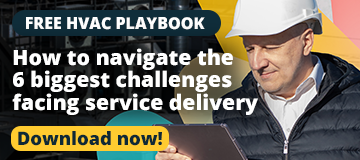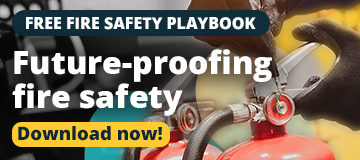
What the FIA technology council should focus on
The fire industry stands at a digital crossroads. The creation of the FIA Technology Council in August 2025 could not have come at a better time. It gives us a shared space to think clearly about where technology is heading and how it can support the entire sector.
Our goal is simple: use technology that supports people, so safety and service stay visible.
This council is more than a forum. It is a chance to shape how we work as an industry, and we have to get it right.
About me
I have spent more than ten years working with fire contractors, compliance managers, and service organisations across the UK. During that time, I’ve helped hundreds of companies, from small firms to large enterprises, streamline their operations and improve efficiency through better use of technology.
One project I am particularly proud of involved leading the rollout of a job management system for a multi-site facilities management business. By improving scheduling, reporting, and job tracking, we reduced manual administration by more than 40% and significantly improved on-time service delivery.
Interoperability that actually works
Everyone talks about integration, but, in practice, too many systems still operate in isolation. Engineers complete work on one platform, office teams copy data into another, and clients wait for updates that should already be visible.
I have seen how much time and effort is lost when simple data cannot move easily between systems.
True interoperability is not just about software linking together. It is about creating consistent, joined-up workflows that reduce effort, not add to it. Asset records, job sheets, certificates, schedules, and photographs should move freely across systems, captured accurately and shared seamlessly.
The council can lead by helping to define the minimum data sets that underpin these workflows. By aligning them with BS 8644-1 and the golden thread principles, we can make sure information flows securely and consistently from installation to maintenance.
Publishing open guidance would allow every business, from small contractors to national service providers, to connect systems in a way that improves both efficiency and compliance.
Interoperability done well will improve data consistency, accuracy, and give everyone the same source of truth.
Real-time visibility, shared fairly
If we want real-time action, we need real-time visibility. Every stakeholder involved in fire safety, including engineers, planners, compliance officers, and clients, should be able to see the live status of checks, jobs, and assets without delay or extra administration.
Access to information should be clear, secure, and based on role. Engineers should see what needs to be done, planners should know what is scheduled, and clients should have confidence that the work is complete and compliant.
Visibility should not be hidden behind complex systems or additional licence costs. It should be part of how we work every day, simple to access and easy to audit.
When the right people have the right data at the right time, decisions are faster, errors are fewer, and compliance becomes easier to prove.
That same principle of clarity should also apply to how we capture and use information.
Capture once, repeat use
Compliance should make work easier, not harder. Too often, engineers record the same information multiple times, on paper, in spreadsheets, and then again in back-office systems. Every re-entry creates delays and increases the chance of error.
The council should prioritise digital processes that allow data to be captured once, at the point of work, and reused automatically across reports, certificates, and client updates. This approach eliminates duplication and keeps every record traceable.
When information is captured accurately at source, it creates a single record of truth that everyone can rely on. Engineers spend less time on administration, office teams stay instantly informed, and clients receive faster, more transparent service.
Cyber made usable
As data becomes business critical, cybersecurity measures need to continually strengthen. Fire safety systems are now part of connected digital networks, which means the responsibility to protect data sits with every organisation, large or small.
The council should help firms understand what good looks like in practical terms. Cyber Essentials provides a clear, achievable baseline that all members can adopt. For connected or networked systems, the IEC 62443 framework offers additional guidance to manage risk in a structured and measurable way.
Our goal should be to make cybersecurity clear, practical, and achievable. Plain language, realistic steps, and accessible support will help every business strengthen its defences and build digital confidence.
Cybersecurity is no longer a specialist concern. It is a shared responsibility and part of everyday professional practice.
Of course, guidance only matters if it works in practice.
Prove it in the field
Progress happens when ideas are tested, not just discussed. The council should lead by supporting pilot programmes that bring technology to real sites, with real engineers, clients, and compliance teams involved.
Each trial offers a chance to gather practical feedback, understand what works, and identify where improvements are needed. By documenting and sharing these lessons openly, the council can help the entire industry move forward together.
We should measure success not only by what is written in policy, but by what is proven in the field.
Why am I standing for election?
This is a pivotal moment for the fire industry. The FIA Technology Council has the opportunity to deliver not just good ideas, but real, practical change that strengthens how we all work.
I have spent more than a decade working alongside engineers, service managers, and compliance teams, helping them solve everyday challenges. I have seen first-hand how fragmented systems slow people down and how simple, joined-up processes can make a genuine difference.
I am standing because I want to help us turn technology into a quiet enabler of safety and service, not another layer of administration. Whether you are running a small contracting firm or managing compliance across hundreds of sites, you should be able to rely on your systems to make everyday operations smoother, more consistent, and easier to trust.
Values pledge
I believe the council should represent everyone in the industry, from the engineers on site to the clients who rely on their work. My focus is on keeping things vendor-neutral, evidence-based, and practical, so that every discussion leads to real outcomes that make life easier for the people delivering the job.
Working together
By collaborating across FIA committees, including those focused on competence, training, and certification, we can create joined-up guidance that strengthens confidence, consistency, and safety across the sector.
Together, we can strengthen competence, collaboration, and confidence across every level of fire safety.
If you believe that technology should support the people doing the work, not make life harder, I would be proud to work alongside you. Together, we can build a smarter, safer, and more collaborative future for fire safety.

Book a demo today!
Speak to our product experts to see how the Joblogic features adapt to fit your business and workflows
*No hard sell, no commitment


.png)